Lemongrass herb: growing at home and its domestic use
Lemongrass is a perennial plant, its most basic use is as a seasoning in Asian cuisine. The herb is easy to distinguish from other plants that have a similar appearance, it has a pleasant, pronounced citrus aroma, from which the name originated.
Content:
- Description of the plant
- Growing lemongrass at home
- Citronella care
- The healing properties of lemongrass
- Other uses for lemongrass
Description of the plant
The more common name for lemongrass is lemon grass... Scientifically, the plant has a name that is not so easy to pronounce the first time - "cymbopogon". There are several other names that refer to lemongrass, these are:
- Droplet.
- Lemongrass.
- Citronella.
- Lemon cereal.
- Lemon sorghum.
Lemon grass in cooking can be used both dried and fresh.
The stem of the plant is very hard and rough, but the core is soft and tender. In addition, the plant is added to curries, soups and tea. Lemongrass grows rapidly, reaching a maximum height of 1.5 meters. The root system is strong, so the soil on which the grass grows is quickly depleted. In the wild, it grows in Asian countries.
There are two main types of lemongrass:
- West Indian was first discovered in Sri Lanka. Today, lemongrass is grown artificially in Africa, Western India and Asian countries with a tropical climate. In Guatemata, you can even find herbal oil.
- East Indian lemon grass was found in East India and is cultivated exclusively in this area.
To obtain oil from lemongrass, steam distillation is used.
The plant has a tonic and aphrodisiac properties. Lemongrass contains a large amount of useful chemical components, due to which it is used in food, cosmetics, and folk medicine. The composition of West Indian and East Indian grass is different. The first contains: citral, micrin, citronellol, nerol, geraniol, linalol, methylheptenone, farnesol. The second contains: citral, dipinene, borneol, matilevgenol, geraniol.
Growing lemongrass at home
Lemon grass is a tropical plant, so in our climate it is not so easy to grow it, but it is quite possible. Citronella is grown through seedlings. Seeds can be bought at almost every garden store or ordered online.
Seeds also need to be prepared:
- To do this, they are wrapped in a damp cloth, then in a plastic bag and left in a warm place for 12 hours.
- Before planting, the seeds are dried with napkins.
- The seeds must be sown on moist fertile soil. The seeds are laid shallowly, only half a centimeter.
- The container in which the seedlings will be grown is covered with plastic wrap or glass. This is done so that moisture remains in the "steam room" and the seeds germinate faster.
- The room temperature should not be lower than 20 degrees, again this is due to the tropical origin of lemongrass.Faster and stronger seedlings will appear in the bright sun, so you should choose the south side for cultivation. After the first shoots have appeared, the film can be removed. Already in late spring - early summer, lemongrass can be transplanted into open ground.
Before planting citronella, it must be prepared for new conditions, that is, acclimatized:
- Every day for a week, a container with sprouts is taken out into the street in the morning, and brought back into the house in the evening.
- Then for several days you can leave the plant directly in pots outside overnight.
- After that, lemongrass can be safely transplanted to a permanent place on the site and not be afraid that it will not take root.
The conditions of central and northern Russia are not suitable for growing lemongrass as a perennial, the plant can only be annual. If you want lemongrass to please the eye for many years, then it can be grown in a container in your home garden, for example, in a bucket, box or container. If this option is suitable, then the box needs to be slightly re-equipped. A small hole is made in the bottom of the container.
The box can be directly buried in the ground so that it looks like the grass is growing out of the ground, or you can choose a beautiful pot and just put it in a prominent place.
By the way, lemongrass protects the garden from mosquitoes, so it will be a real salvation on the veranda on summer evenings.
Citronella care
Taking care of the plant is not so difficult, but you will need to observe some nuances:
- Attention should be paid first choosing good soil... It should be light, drained, preferably sandy; the Ph reaction should be slightly acidic. The soil must be nutritious, it is also provided with constant watering. The plant loves moisture because of its origin, so you need to make sure that the soil does not dry out.
- The roots must also be constantly moistened, so they are mulched, the mulch layer must be massive, more than 10 cm.
- The place in the garden near the lemon grass should be warm and sunny, the northern cold winds should not fall on the plant. Citronella grows strictly in the place where it was planted, and does not spread throughout the site, unlike similar ornamental grasses.
- You need to water lemongrass with soft water, it is good if it is rain. If it is not possible to collect rainwater, then tap water is used, but it is pre-defended and warmed up before watering.
- If lemongrass is grown for eating, then you can cut it at any time of the year. The leaves are cut into small pieces and laid out to dry under a canopy. Then they can be transferred to closed containers such as cans.
The plant has a hard time enduring winter, so it needs to provide good shelter.
If citronella is grown in containers or boxes, then it will be enough to simply transfer them indoors for the winter. At temperatures below +10 degrees, the leaves die off rapidly. It is also advisable to move those plants that grew in open ground for the winter to pots for wintering in the house. In addition, it will emit a pleasant aroma that not only refreshes, but also purifies the air.
The healing properties of lemongrass
Lemon grass is actively used in folk medicine... It will take a lot of time and space to list all its advantages, so let's try to highlight the main ones.
The main action of citronella:
- Sedative.
- Insecticidal.
- Fungicidal.
- Healing.
- Deodorant.
- Carminative.
- Bactericidal.
- Astringent.
- Antiseptic.
- Antioxidant.
- Anti-epidemic.
- Antimicrobial.
- Antidepressant.
- Pain reliever.
The herb affects the psycho-emotional state of a person, it helps to raise vitality, restore strength and eliminate fatigue.
Increases mental and physical performance, adapts to adverse external conditions. With depression, it balances appetite, restores interest in life.
Because lemongrass is antipyretic and bactericidal, it helps fight a variety of diseases. The plant is actively used for colds and bronchitis, sore throat and rhinitis. It prevents infections from spreading throughout the body, which is especially important for herpes and laryngitis. Lemon sorghum helps to stop the development of rosacea and varicose veins, enhances microcirculation, has an angiotonic effect in case of anemia and hypotension.
Schisandra fights sensory-motor disorders, general weakness and dizziness, helps to cheer up.
At the same time, it stimulates the digestive tract, speeds up metabolism (which is effective for obesity and overweight). With alcohol intoxication syndrome, it fights hangovers. Concerning the musculoskeletal system, it strengthens the muscular and ligamentous apparatus, increases the tone and flexibility of the body, makes the muscles more elastic. It is effective to use lemon sorghum after workouts, as it helps to remove lactic acid from the muscles, relieve fatigue. Increases milk supply in a nursing mother.
Lemongrass oil is also used in veterinary medicine to rid pets of parasites. In the house, lemongrass is able to eliminate the smell from animals.
Other uses for lemongrass
Lemongrass herb is used in cosmetology.
It is suitable for the following problems:
- Helps improve skin condition in case of fungus.
- Fights bromosis, hyperhidrosis and oily seborrhea.
- Normalizes the fat balance of the skin.
- Relieves inflammation of the sebaceous glands.
- Tightens enlarged pores.
- Improves overall skin condition.
- Treats problem skin.
- Tones loose, inelastic skin.
Indoors, lemon sorghum helps to eliminate unpleasant odors, purify air and water, and disinfect them. With insect bites, it helps to quickly get rid of itching and burning.
It is used for inhalations, for aromatherapy, aroma medallions, in the bathroom, sauna, steam bath and during massage, during reflex massage and compresses, for enriching cosmetics and as a deodorant.
When applied to the skin for the first minutes, a burning and tingling sensation will be felt, this is a normal reaction of lemongrass. If the itching intensifies and does not disappear, then you need to stop using the plant, as this may be a sign of an allergic reaction. Do not use citronella on delicate or dry skin.
Not recommended for use during pregnancy and children under 7 years of age.
Do not contact the grass for more than 14 days in a row. Sometimes the use of herbs gives a hoarse voice, you need to be prepared for this. Citral is isolated from lemongrass, which can replace verbena oil and lemon balm... The herb extract is added to soft drinks and alcoholic beverages. Grass added to tea or a decoction is made. The dried herb is used as a condiment and added to sauces. In Asian cuisine, you can find the use of fresh sorghum. The white part of the stem is cooked and served on the table. To enhance the smell, the grass is beaten off. Sorghum goes best with seafood, poultry and fish.
More information can be found in the video.




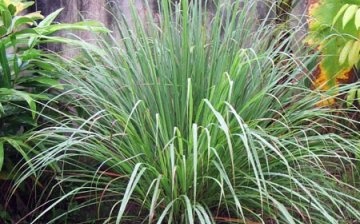
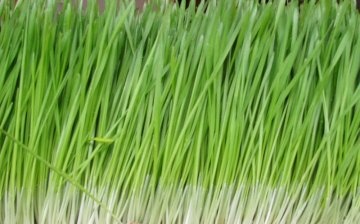
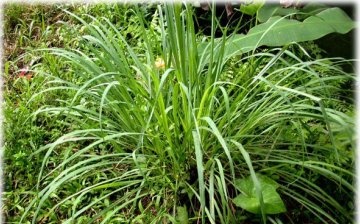
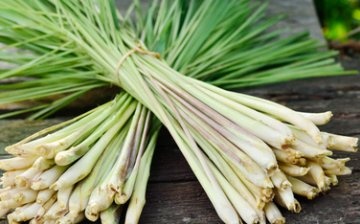
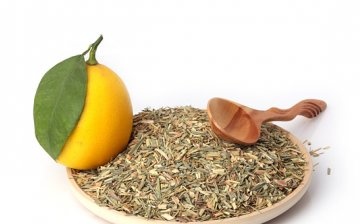






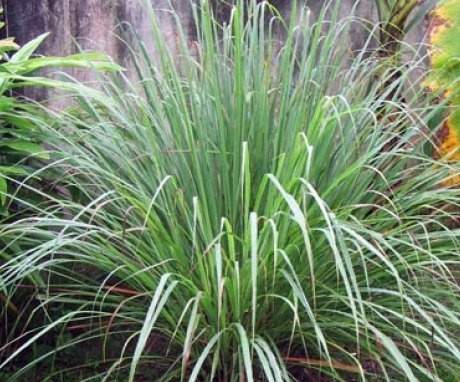
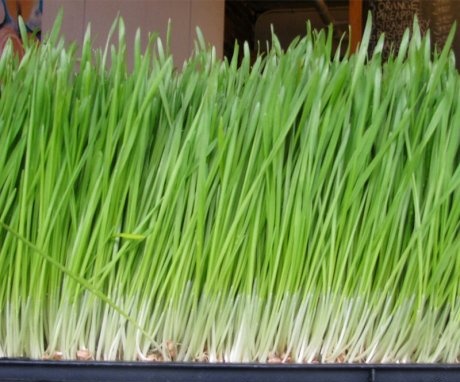
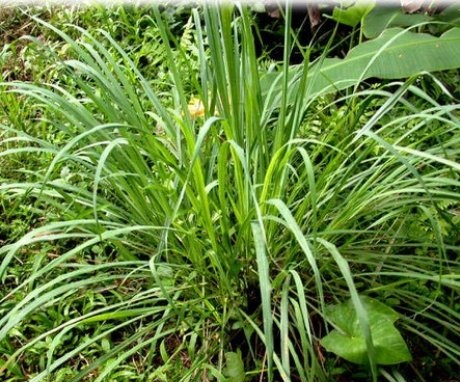
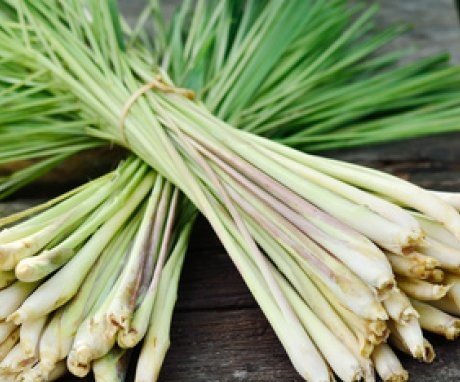
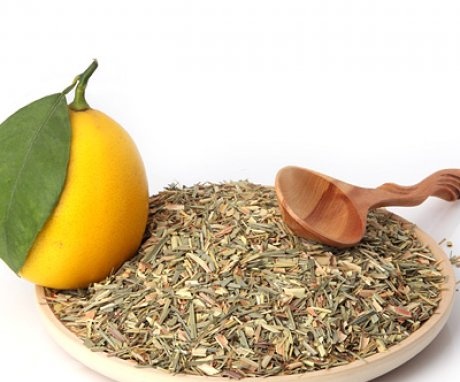
Tell me more recipes for using lemongrass?
I read somewhere that if you make yourself a bathroom with a decoction of ginger and lemongrass, the skin becomes silky, and if you add yogurt to this mixture, then it is good to apply as a face mask, removes wrinkles. But I didn't check
I happened to meet lemongrass :) it has a very pleasant citrus aroma ~
I also heard that you can brew its stems and drink with a decrease in immunity, is this really so?)